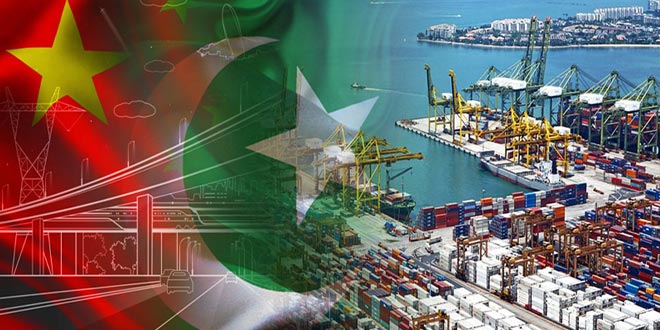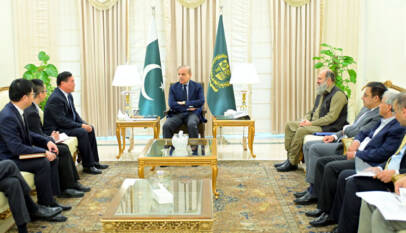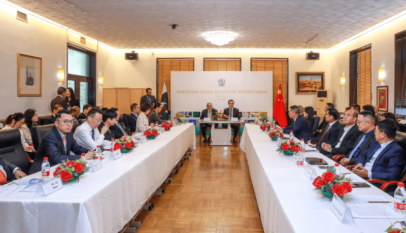CPEC played a pivotal role in putting Pakistan’s economy back on track
In the response of recent criticism from the United States, it needs to be reviewed what CPEC has done for Pakistan, its economy and people. One of the accusations raised by the USA was that China is bringing its labour and machinery under the CPEC manoeuvre. However, in reality, Chinese companies have only sent advisors and engineers who are assisting thousands of Pakistani workers in multiple CPEC projects. CPEC is an all-inclusive programme which focuses on primary sectors such as energy, infrastructure, telecommunication network, industries and industrial parks, agricultural modernisation, poverty alleviation, tourism and financial assistance. Besides, for the welfare of people, CPEC has projects in public health, education, civic cooperation and people to people exchanges. During Prime Minister Imran Khan's latest visit to China, the Chinese government announced 27 socio-economic projects worth $1 billion for the betterment of the people of Pakistan. This is not all, CPEC's masterpiece is the development of Gwadar port which is considered as the manifestation of China-Pakistan's strategic partnership. With world-class commercial facilities and infrastructure Gwadar would become one of the competitive ports and is projected to transform the country into a regional energy hub. Port would provide an impetus for the growth of Makran coast and Balochistan province. Under the first phase of CPEC, three multifunction terminals are installed, which are operational. CPEC has set course for the progress and prosperity of Pakistan in the long run, Pakistan should not pay head to CPEC detractors and their propaganda.
It is being acknowledged by many economists, analysts and neutral observers that CPEC has played an important role in revival of Pakistan’s economy through investment in infrastructure development, and especially in power projects that led to overcome the shortfall of electricity. It was a foregone conclusion that with the completion of its projects Pakistan will usher into an era of progress and prosperity. In the second phase, Special Economic Zones would be established; and meanwhile China has allowed import of 313 duty-free items for Chinese market. Yet, there are others who wittingly or unwittingly create unfounded fear and misconception about the CPEC. Anyhow, CPEC will open new vistas of development as a result of which the national economy will grow fast, lead to creation of new jobs, poverty reduction and development of transportation sector and boost industrial growth and exports.
Last month, the United States warned Pakistan of the long-term risks to its (Pakistan) economy if it embraces China’s massive infrastructure project and suggested that it should instead look to the US business model. Alice Wells, the acting Assistant Secretary of State for South Asia, told a conference on November 21 that the $60 billion China-Pakistan Economic Corridor (CPEC) will only profit Beijing. The United States and many EU countries have criticized China’s project and its lending for regional infrastructure efforts, warning that it has saddled some developing countries with debts that they cannot afford to repay. India from the day one has been opposing CPEC because it is said to be a game changer for Pakistan. The CPEC project consists of rail, road and energy infrastructure and is part of the wider $1 trillion Chinese project known as the Belt and Road Initiative.
Anyhow, the US continues to express concerns stating that the Corridor is going to take a growing toll on the Pakistan economy, especially when the bulk of payments start to come due in the next four to six years. “Even if loan payments are deferred, they are going to continue to hang over Pakistan’s economic development potential, hamstringing Prime Minister Imran Khan’s reform agenda. It’s clear, or it needs to be clear, that CPEC is not about aid; the initiative was driven by non-concessionary loans, with Chinese companies sending their own labour and material”, Alice Wells said at the Woodrow Wilson International Center for Scholars in Washington. But it is travesty of the truth, as Chinese investors had sent only advisors and engineers, and they employed thousands of Pakistani workers in various projects. The question is why the US did not offer similar projects since a long time.
CPEC is a comprehensive package of cooperative initiatives and projects, which covers key areas including connectivity, information network infrastructure, energy cooperation, industries and industrial parks, agricultural development, poverty alleviation, tourism, financial cooperation as well as livelihood improvement including municipal infrastructure, education, public health and people-to-people communication. Energy sector had been assigned top priority to help Pakistan overcome energy shortage. However, Gwadar Port Project is the centerpiece of Pak-China Strategic Partnership with its strategic location and potential for becoming the future economic and energy hub. The projects under China-Pakistan Economic Corridor will transform it into one of the world’s leading port cities having top-class commercial and tourist facilities, integrated infrastructure and investment opportunities. This will make Gwadar a catalyst for development of Makran Coast and Balochistan in particular and Pakistan in general. The first phase of Gwadar port with three multipurpose berths having a total quay length of 602 meters is fully operational.
The first phase included three multipurpose berths of 602m quay length, one service berth of 100m length, 4.35 km navigable channel of 11.6/12.5m depth, roads, plinths and transit shed, operational craft and equipment, including navigational aids and shore based port buildings and allied facilities. During Prime Minister Imran Khan’s recent visit to China, it was agreed to start the second phase of construction of China-Pakistan Economic Corridor, which will focus on industrial cooperation, agricultural cooperation, and construction of Gwadar Port and socio-economic development, of which 27 new projects will be launched during the year. The China-Pakistan Economic Corridor, linking Gwadar Port to the Chinese province of Xinjiang, will be a game changer not only for Balochistan and Pakistan but also Central Asian countries. In Balochistan, development activity has picked up with the return of peace after years of insurgency and violence.
But many anti-Pakistan lobbies have been at work to sabotage the China-Pakistan Economic Corridor (CPEC) including India and the US, as they know that with the completion of its projects Pakistan will usher into an era of progress and prosperity. Anyhow, CPEC will open new vistas of development as a result of which the national economy will grow fast, lead to creation of new job opportunities, poverty reduction and development of transportation sector and boost industrial growth. Energy sector has been assigned top priority to help Pakistan overcome energy shortage, which will end load-shedding to give relief to the people. China’s planned efforts in Pakistan include the development of Gwadar on the Arabian Sea into a world-class port. Saudi Arabia earlier this year said it plans to set up a $10 billion oil refinery in Gwadar, located in the southwestern province of Balochistan.
Ambassador Zaidong highlights China’s embrace of innovation for sustainable development in Pakistan partnership
In recent months, the term “new quality productive forces” has sparked intense discussions…











